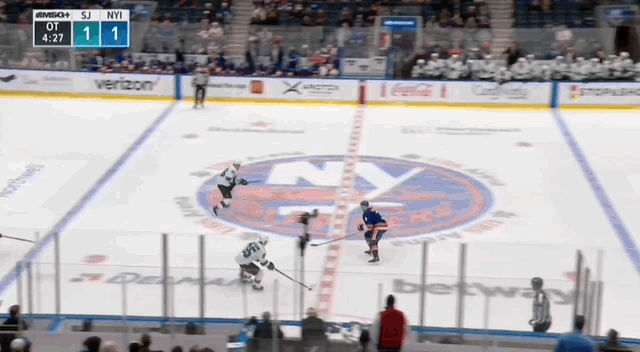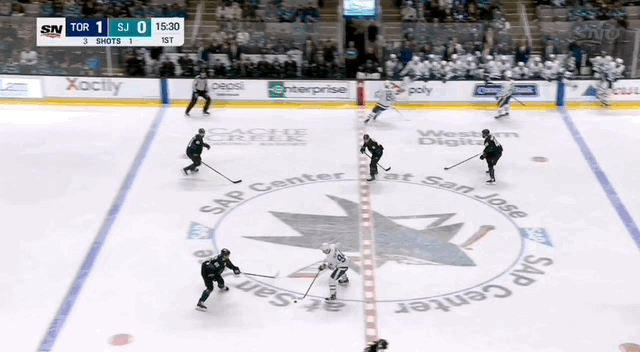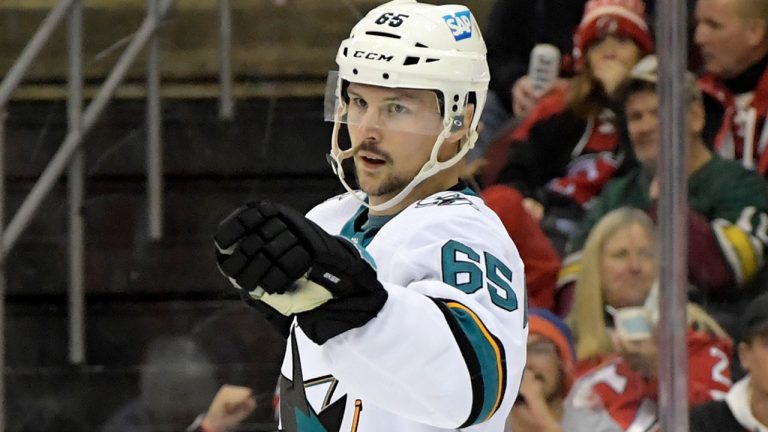Erik Karlsson was one of the best defencemen in the league when he was traded from the Ottawa Senators to the San Jose Sharks in 2018. But since then, things obviously haven’t gone to plan for either the defender or the team.
The Sharks were a playoff-caliber team when they acquired the number one back. Now they’re in the midst of a re-tool of sorts after missing the last two post-seasons.
Karlsson, on the other hand, saw his game drag down, especially while sustaining injuries early in his tenure with his new club. First his groin in 2018-19 that really hindered Karlsson’s explosive skating, then a broken thumb the following season. And last year, another groin injury held him out of a stretch of games.
The injuries, mixed with an expected age-related decline, likely impacted his game more than the Sharks could have anticipated — as he’s seen a drop-off in both his offensive and defensive impacts over the past few seasons. That decline in play, especially when stacked against his $11.5 million cap hit, can make Karlsson an easy target for criticism.
But this year, Karlsson’s resurgence has merited praise through the first quarter of 2021-22.
Through 23 games, the defender’s net eight goals and 18 points, putting him 14th in scoring among blue liners. That’s a point on 60 per cent of the Sharks’ goals he’s on the ice for. With just five secondary assists, he’s earned 13 primary points, showing the direct impact he has on his team’s scoring.
Aside from his scoring — some of which has been particularly timely for the Sharks who are very much in the playoff race still — it’s Karlsson’s impact below the surface that’s stood out so far.

Karlsson’s always rated highly in his offensive generating plays, but this year, he so far ranks ahead of his recent seasons with the Sharks. It starts with his play in his own zone. He’s forcing takeaways at the best rate of his career (and it doesn’t hurt that he’s not turning the puck over as much compared to seasons past, either).
Defenders are often tasked with getting the puck over the blue line and out of their end. And no defenceman tries to carry the puck out more than Karlsson at 5-on-5. His 13.7 attempts per 60 lead the league, making him one of the best puck-movers — even though his skating isn’t what it once was. Those exits are followed by a successful play about 78 per cent of the time. When expanding to look at all exits with control — so carry-outs and passes — he still ranks second thanks to how often he skates the puck out himself, trailing only Roman Josi of the Predators.

From there, Karlsson often moves the puck to a teammate in the neutral zone — some of which help transition the puck into the offensive zone with a pass entry.
Relative to his fellow defenders in San Jose, Karlsson moves the puck the most in the offensive end with the highest rate of passes — generally moving the puck east to west, or lower in the zone. Karlsson’s slightly increased his shot assists, or passes that directly lead to shots, from last year — up to 8.85 per 60 at 5-on-5, which now ranks 15th in the league among defenders and leads his team. That’s contributing to the Sharks creating the highest rate of shots for with Karlsson deployed.
Plus, he threads the puck to the quality areas. His rate of passes to the slot isn’t just the best among the Sharks’ defence, but ranks highly among all defenders.

With Karlsson’s contributions to the Sharks creating both quality and quantity chances, it’s helped earn a 2.66 expected goal rate for while he’s deployed — the best on-ice mark of the San Jose defence.
As much as a back can help a team push the pace of play, they also, ideally, aren’t a liability in their own zone. That’s the frequent criticism for offensive players — or the misconception that they can’t be both a high end offensive addition and defensively sound.
The Sharks haven’t been a top tier defensive team in recent years, with numerous defenders taking steps back. But this year, they’ve tightened up compared to last year in particular.
Karlsson is contributing to that, even without being the most physical player. He doesn’t hit often nor is he diving in front of shots as much as others on his team, or around the league. But he plays smart, starting with how he defends the blue line. While he’s not targeted at as high of a rate as his teammates (and some of that may be due to how much more time he spends in the offensive zone when he’s on the ice), he has been successful at denying those entries against at a 55 per cent rate that leads their group, and stacks up well relative to the rest of the league.
And most importantly in today’s NHL, he can help get the team out of trouble by turning the play around and back up the ice.

This season, Karlsson’s bounce back has lined up with some adjustments to his usage. He’s not taking on opponents as strong as before — Brent Burns and Mario Ferraro often take on the most challenging workload — and his minutes have been slightly reduced from last season. While that can seem like a step back, sometimes it’s a tweak that puts a player in a better position to succeed.
Erik Karlsson’s game may have slipped in recent years, and it may never quite match the cap hit the Sharks signed him to, but the elite skills that made him effective throughout his career are still there. With the right adjustments — both from coaching, and from the defender himself to refine his game from the past few seasons — he’s showing just how effective he can still be.
Data via Sportlogiq
[relatedlinks]






COMMENTS
When submitting content, please abide by our submission guidelines, and avoid posting profanity, personal attacks or harassment. Should you violate our submissions guidelines, we reserve the right to remove your comments and block your account. Sportsnet reserves the right to close a story’s comment section at any time.